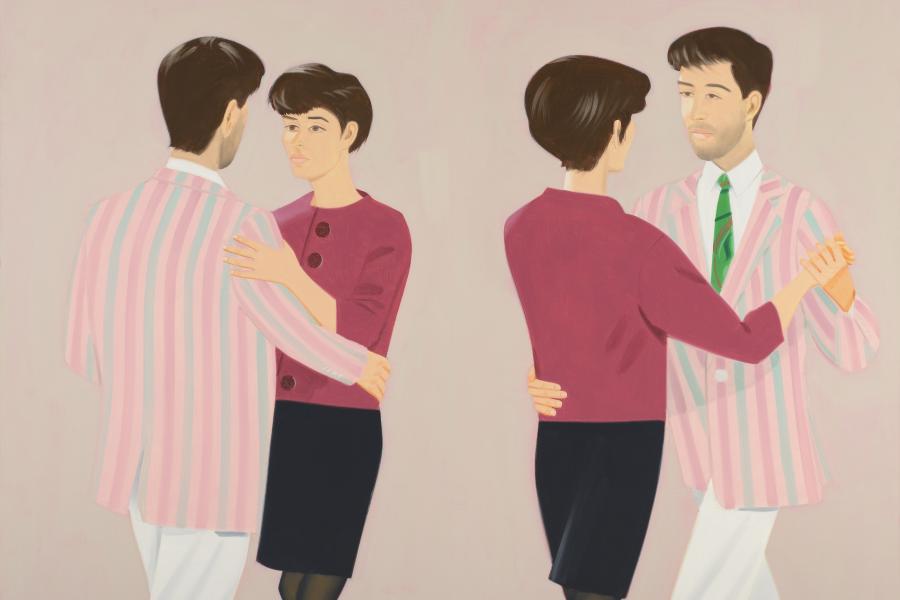Galerie Thaddaeus Ropac is delighted to announce its participation at Shanghai's Art021 fair for the first time from 9-12 November 2017. The fair takes place in the heart of Shanghai, China's most populous city, which is fast becoming one of the cultural capitals of Asia. The growth of the contemporary art scene in the city has been catalysed by the opening of several state-run and private museums including the Long Museum, which is currently hosting Antony Gormley's solo exhibition Still Moving until 26 November. Participation in Art021 for the first time represents Galerie Thaddaeus Ropac's commitment to growing the presence of the gallery and its artists in Greater China and Asia.The gallery will present a selection of works by Jules de Balincourt, Georg Baselitz, Oliver Beer, Imi Knoebel, Gilbert & George, Alex Katz, Robert Mapplethorpe, Robert Rauschenberg, James Rosenquist and Erwin Wurm.
A considerable proportion of Alex Katz's work is concerned with portrait and reproduction or representation of the body. Katz's Roof (1989) is a monumental painting, depicting a melancholic scene with a couple dancing. The picture alternates between representing the back of the man and the woman. Consequently, the viewer is only aware of the expression of one or the other. In his figurative painting, Alex Katz is always on the borderline between abstraction and realism. He was doing figurative painting when the whole of American art had turned decisively away from representation.
Since the 1980s, he has been the outstanding protagonist of Cool Painting and one of the most influential painters in the world. Long before the protagonists of pop art, such as Andy Warhol, Katz adopted the principle of serialism, and influenced an entire generation with it. Katz's works, however, always bear a connection with the history of American painting.
James Rosenquist uses advertising tropes to engage the senses, while conveying a singular sense of mystery: the viewer questions what certain of the elements and their association might represent.
Spaghetti is an important Pop motif in Rosenquist’s oeuvre that appeared very early on in his 1960s paintings, such as the 1964-65 F-111 (MoMA Collection) or I love you with my Ford, 1961 (Moderna Museet, Stockholm). Like his contemporaries Andy Warhol, Roy Lichtenstein and others, Rosenquist has been inspired by everyday objects that he restages and transforms to reflect on consumer society. There is an aesthetic and playful quality to spaghetti, making it a useful tool for James Rosenquist to explore shape, consistency and colour, when curator Walter Hopps asked the artist “why spaghetti?” Rosenquist answered: “Two reasons: I like the way it looks, and I like the way it tastes.”
In 1988, Robert Rauschenberg began his Urban Bourbons series of paintings with silkscreened imagery and expressionistic paintwork on enameled, mirrored, and anodized aluminum. He continued to work on it through 1996. The imagery in this series often referred to Robert Rauschenberg’s travels and his fascination with the cityscape. The mirrored surfaces of these works create a reflective depth.
In Cat Lore (Urban Bourbon), the artist uses three different colours with a gestural brushwork, blue, purple and black/brown to create three narratives within the painting.
 Alex Katz, Roof, 1989 Oil on linen. 182.9 x 246.4 cm (72 x 97 in) © Alex Katz/ DACS, London, 2017. Photo: Paul Takeuchi - Mit freundlicher Genehmigung von: ropac
Alex Katz, Roof, 1989 Oil on linen. 182.9 x 246.4 cm (72 x 97 in) © Alex Katz/ DACS, London, 2017. Photo: Paul Takeuchi - Mit freundlicher Genehmigung von: ropac Alex Katz, Roof, 1989 Oil on linen. 182.9 x 246.4 cm (72 x 97 in) © Alex Katz/ DACS, London, 2017. Photo: Paul Takeuchi - Mit freundlicher Genehmigung von: ropac
Alex Katz, Roof, 1989 Oil on linen. 182.9 x 246.4 cm (72 x 97 in) © Alex Katz/ DACS, London, 2017. Photo: Paul Takeuchi - Mit freundlicher Genehmigung von: ropac